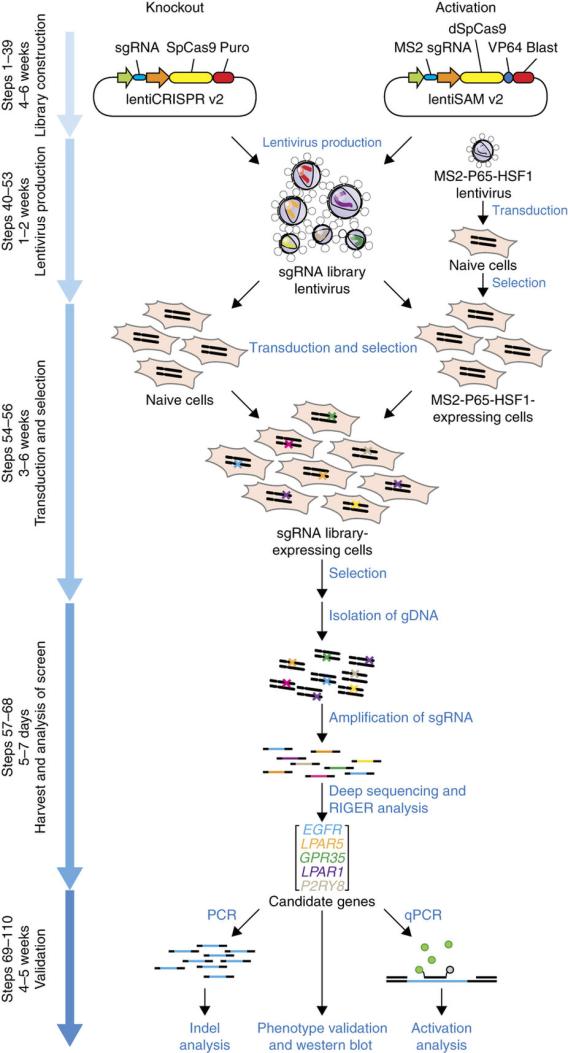
Clustered Regularly Interspaced Short Palindromic Repeats is a part of the adaptive immune system and are used by many bacterial species. For example, in the case of bacteriophage, the sequences from the viral genome are integrated into the bacterial genome. Bacteria uses the antisense RNA generated during the next attack of bacteriophage as the memory signature as a defense mechanism.
CRISPR-Cas genome editing technique has borrowed the above-mentioned concept from bacteria and archaea. The development of CRISPR-Cas systems has enabled scientists to make changes (addition, removal, or alteration at the desired location of the genome) in the genome of organisms. The methodology has greatly enriched our understanding in the field of human diseases, food, agriculture, etc. Please see the article for more information on CRISPR
Here is the timeline of the development of CRISPR as the genome editing technique.
Below is the flowchart showing various steps in CRISPR screen methodology.
We here at the McDermott Center Bioinformatics Lab, help researchers with the experimental design and bioinformatics analysis of the screening results. Please contact us for discussing your bioinformatics queries regarding the analysis of the screening results.